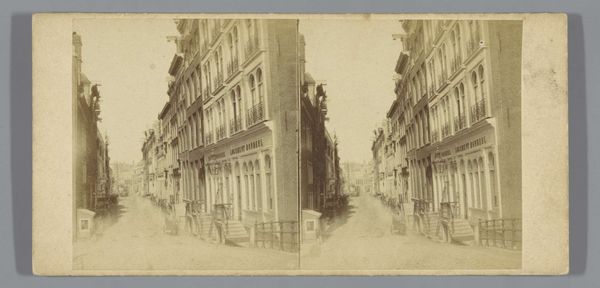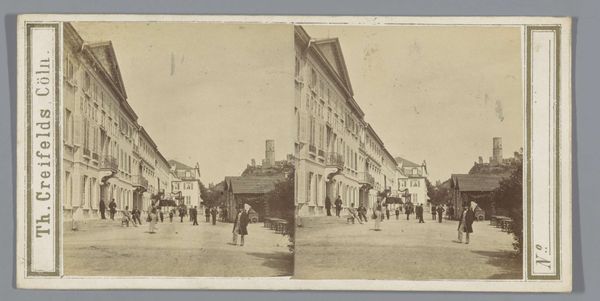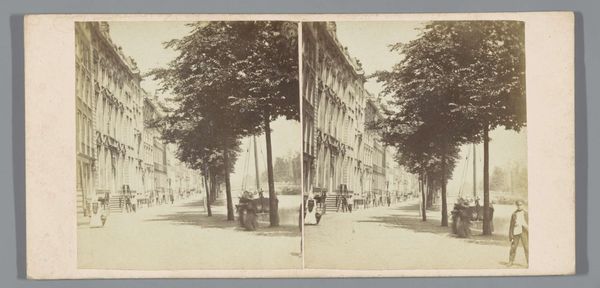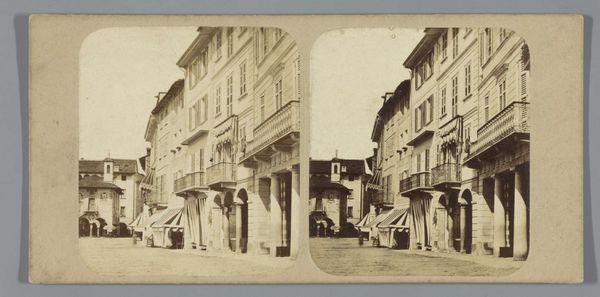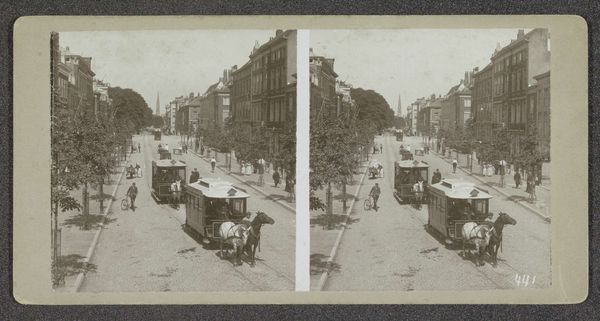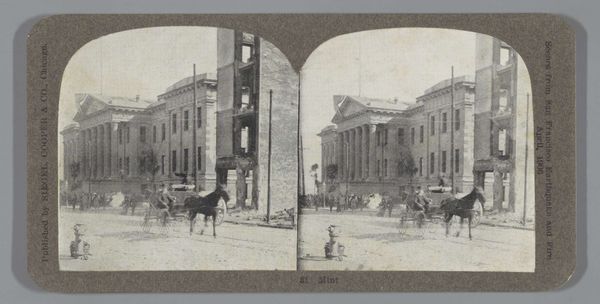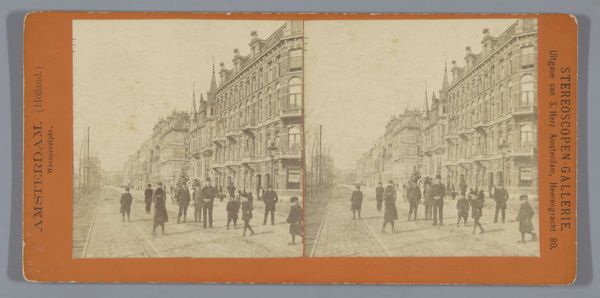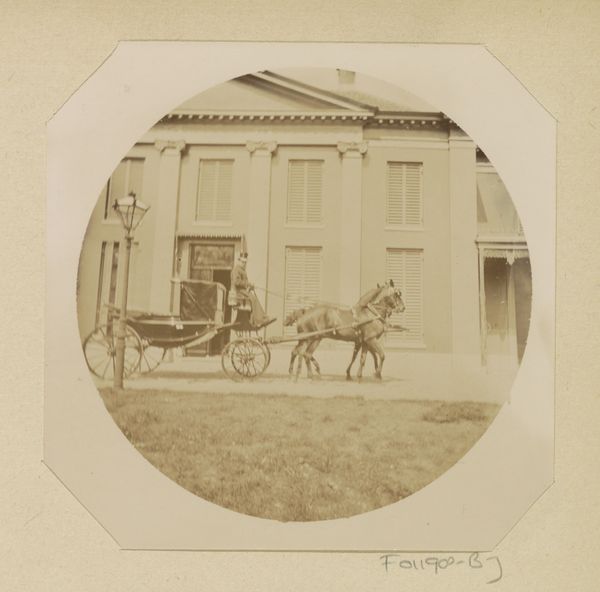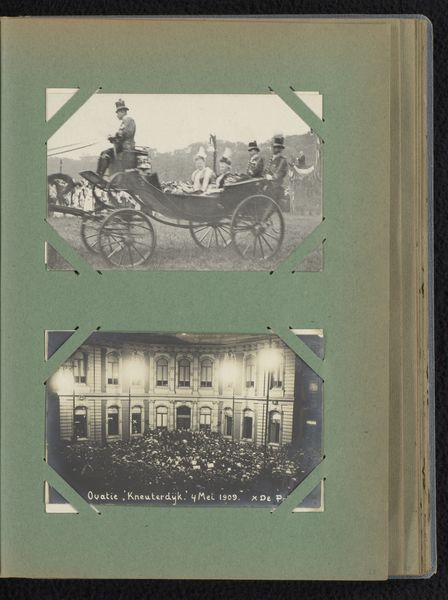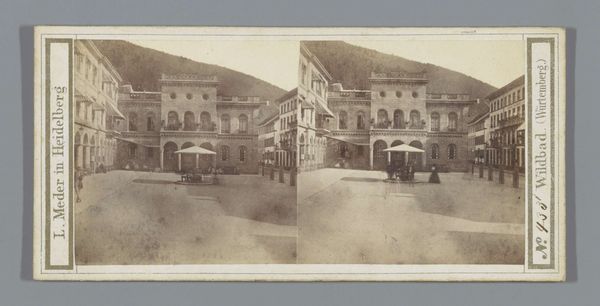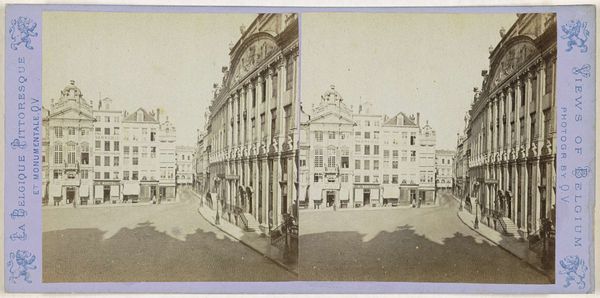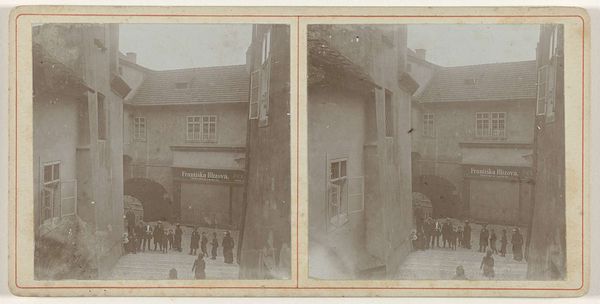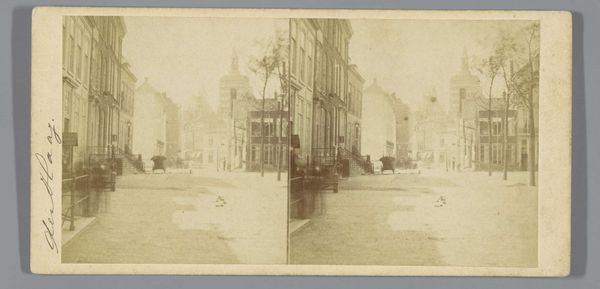
print, daguerreotype, photography
# print
#
daguerreotype
#
street-photography
#
photography
#
realism
Dimensions: height 80 mm, width 157 mm
Copyright: Rijks Museum: Open Domain
Curator: This is a striking street scene, captured by Geldolph Adriaan Kessler sometime between 1903 and 1907. Titled "Cassel, Juli 1903," it's a wonderful example of early street photography, rendered in the daguerreotype style as a print. Editor: My first impression is of a somber tableau. The monochrome palette combined with the formal composition evokes a palpable sense of stillness, of a bygone era rigidly preserved. Curator: Indeed. Kessler has expertly framed the building, presumably of some importance, lending it a monumental presence, even through the subdued tonal range. I’m especially drawn to the use of symmetry. Notice how he positions the horse-drawn carriages to either side. Editor: I see what you mean. The composition implies stability. Perhaps a subtle commentary on the values and structure of Cassel's society at the time? Given the formal quality, I'd wager this location must have been some kind of governmental center, maybe even the imperial center. Curator: Possibly. Though I think it might be the building for the HOHENZOLLERN. More interesting, I think, is how the detail starts to fade around the edges of the print. It focuses the viewer on the scene, but also softens the rigid geometries of the architecture. Editor: The contrast enhances the foreground— the workers and their handcarts. They're perfectly captured representatives of their time and labor, adding depth to what could have been merely an architectural documentation. These working men seem to be arranged according to a certain formal structure. Curator: Agreed. Note the contrast between their modest dress and the more elaborate carriages— perhaps Kessler is hinting at the social stratifications inherent in early 20th-century Cassel? What did capturing moments like this mean to him, and his community? Editor: Street photography, particularly using daguerreotypes, democratized portraiture, breaking away from academic traditions. Kessler's technical precision combined with his sharp observations grant an image of immediacy and historical integrity. I really wonder if he was more drawn by recording daily life or making art? Curator: A little bit of both, perhaps. His focus is undoubtedly a study in how forms interact— the curve of a wheel contrasting with the linear rigidity of a facade. It's a beautiful fusion of document and design. Editor: I have to concur. It provides a fascinating intersection of formal artistry and a candid peek into urban social dynamics, solidifying its place as both historical artifact and refined work of art.
Comments
No comments
Be the first to comment and join the conversation on the ultimate creative platform.
